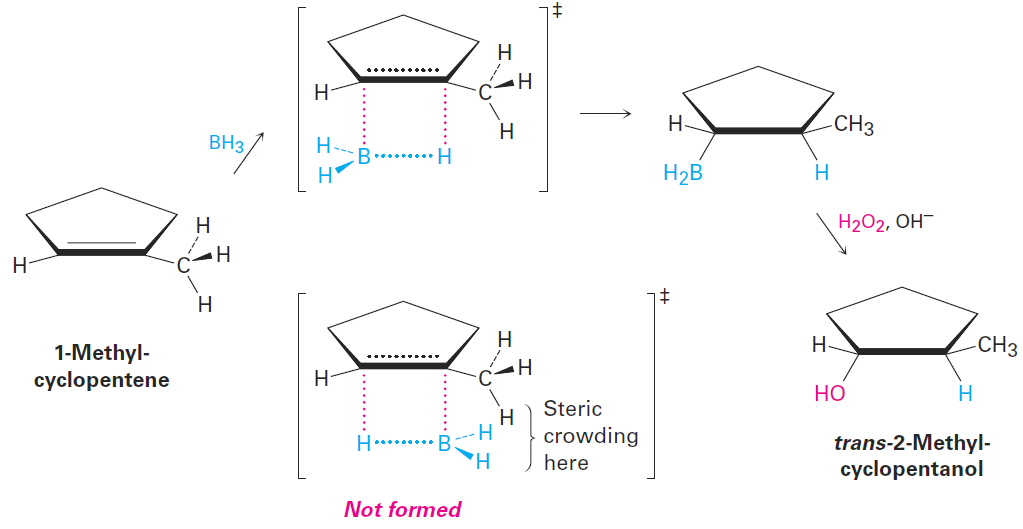

علم الكيمياء

تاريخ الكيمياء والعلماء المشاهير

التحاضير والتجارب الكيميائية

المخاطر والوقاية في الكيمياء

اخرى

مقالات متنوعة في علم الكيمياء

كيمياء عامة


الكيمياء التحليلية

مواضيع عامة في الكيمياء التحليلية

التحليل النوعي والكمي

التحليل الآلي (الطيفي)

طرق الفصل والتنقية


الكيمياء الحياتية

مواضيع عامة في الكيمياء الحياتية

الكاربوهيدرات

الاحماض الامينية والبروتينات

الانزيمات

الدهون

الاحماض النووية

الفيتامينات والمرافقات الانزيمية

الهرمونات


الكيمياء العضوية

مواضيع عامة في الكيمياء العضوية

الهايدروكاربونات

المركبات الوسطية وميكانيكيات التفاعلات العضوية

التشخيص العضوي

تجارب وتفاعلات في الكيمياء العضوية


الكيمياء الفيزيائية

مواضيع عامة في الكيمياء الفيزيائية

الكيمياء الحرارية

حركية التفاعلات الكيميائية

الكيمياء الكهربائية


الكيمياء اللاعضوية

مواضيع عامة في الكيمياء اللاعضوية

الجدول الدوري وخواص العناصر

نظريات التآصر الكيميائي

كيمياء العناصر الانتقالية ومركباتها المعقدة


مواضيع اخرى في الكيمياء

كيمياء النانو

الكيمياء السريرية

الكيمياء الطبية والدوائية

كيمياء الاغذية والنواتج الطبيعية

الكيمياء الجنائية


الكيمياء الصناعية

البترو كيمياويات

الكيمياء الخضراء

كيمياء البيئة

كيمياء البوليمرات

مواضيع عامة في الكيمياء الصناعية

الكيمياء الاشعاعية والنووية
Hydration of Alkenes: Addition of H2O by Hydroboration
المؤلف:
John McMurry
المصدر:
Organic Chemistry
الجزء والصفحة:
9th - p230
21-7-2016
5184
Hydration of Alkenes: Addition of H2O by Hydroboration
In addition to the oxymercuration–demercuration method, which yields the Markovnikov product, a complementary method that yields the non- Markovnikov product is also useful. Discovered in 1959 by H.C. Brown and called hydroboration, the reaction involves addition of a B-H bond of borane, BH3, to an alkene to yield an organoborane intermediate, RBH2. Oxidation of the organoborane by reaction with basic hydrogen peroxide, H2O2, then gives an alcohol. For example:

Borane is very reactive as a Lewis acid because the boron atom has only six electrons in its valence shell. In tetrahydrofuran solution, BH3 accepts an electron pair from a solvent molecule in a Lewis acid–base reaction to complete its octet and form a stable BH3–THF complex.

When an alkene reacts with BH3 in THF solution, rapid addition to the double bond occurs three times and a trialkylborane, R3B, is formed. For example, 1 molar equivalent of BH3 adds to 3 molar equivalents of cyclohexene to yield tricyclohexylborane. When tricyclohexylborane is then treated with aqueous hydrogen H2O2 in basic solution, an oxidation takes place. The three C-B bonds are broken, -OH groups bond to the three carbons, and 3 equivalents of cyclohexanol are produced. The net effect of the two-step hydroboration–oxidation sequence is hydration of the alkene double bond.

One of the features that makes the hydroboration reaction so useful is the regiochemistry that results when an unsymmetrical alkene is hydroborated. For example, hydroboration–oxidation of 1-methylcyclopentene yields trans- 2-methylcyclopentanol. In this process, boron and hydrogen add to the alkene from the same face of the double bond—that is, with syn stereochemistry, the opposite of anti—with boron attaching to the less highly substituted carbon.
During the oxidation step, the boron is replaced by an -OH with the same stereochemistry, resulting in an overall syn non-Markovnikov addition of water. This stereochemical result is particularly useful because it is complementary to the Markovnikov regiochemistry observed for oxymercuration– demercuration.

Why does alkene hydroboration take place with syn, non-Markovnikov regiochemistry to yield the less highly substituted alcohol? Hydroboration differs from many other alkene addition reactions in that it occurs in a single step without a carbocation intermediate (Figure 1-1). Because the C-H and C-B bonds form at the same time and from the same face of the alkene, syn stereochemistry results. Non-Markovnikov regiochemistry occurs because attachment of boron is favored at the less sterically crowded carbon atom of the alkene.

Figure 1-1 Mechanism of alkene hydroboration. The reaction occurs in a single step in which the C-H and C-B bonds form at the same time and on the same face of the double bond. The lower energy, more rapidly formed transition state is the one with less steric crowding, leading to non-Markovnikov regiochemistry.
Predicting the Products of a Hydration Reaction
What products would you obtain from reaction of 2-methyl-2-pentene with: (a) BH3, followed by H2O2, OH- (b) Hg(OAc)2, followed by NaBH4
S t r a t e g y
When predicting the product of a reaction, you have to recall what you know about the kind of reaction being carried out and apply that knowledge to the specific case you’re dealing with. In the present instance, recall that the two methods of hydration—hydroboration–oxidation and oxymercuration– demercuration—give complementary products. Hydroboration–oxidation occurs with syn stereochemistry and gives the non-Markovnikov addition product; oxymercuration demercuration gives the Markovnikov product.
S o l u t i o n

 الاكثر قراءة في الهايدروكاربونات
الاكثر قراءة في الهايدروكاربونات
 اخر الاخبار
اخر الاخبار
اخبار العتبة العباسية المقدسة

الآخبار الصحية















 قسم الشؤون الفكرية يصدر كتاباً يوثق تاريخ السدانة في العتبة العباسية المقدسة
قسم الشؤون الفكرية يصدر كتاباً يوثق تاريخ السدانة في العتبة العباسية المقدسة "المهمة".. إصدار قصصي يوثّق القصص الفائزة في مسابقة فتوى الدفاع المقدسة للقصة القصيرة
"المهمة".. إصدار قصصي يوثّق القصص الفائزة في مسابقة فتوى الدفاع المقدسة للقصة القصيرة (نوافذ).. إصدار أدبي يوثق القصص الفائزة في مسابقة الإمام العسكري (عليه السلام)
(نوافذ).. إصدار أدبي يوثق القصص الفائزة في مسابقة الإمام العسكري (عليه السلام)


















